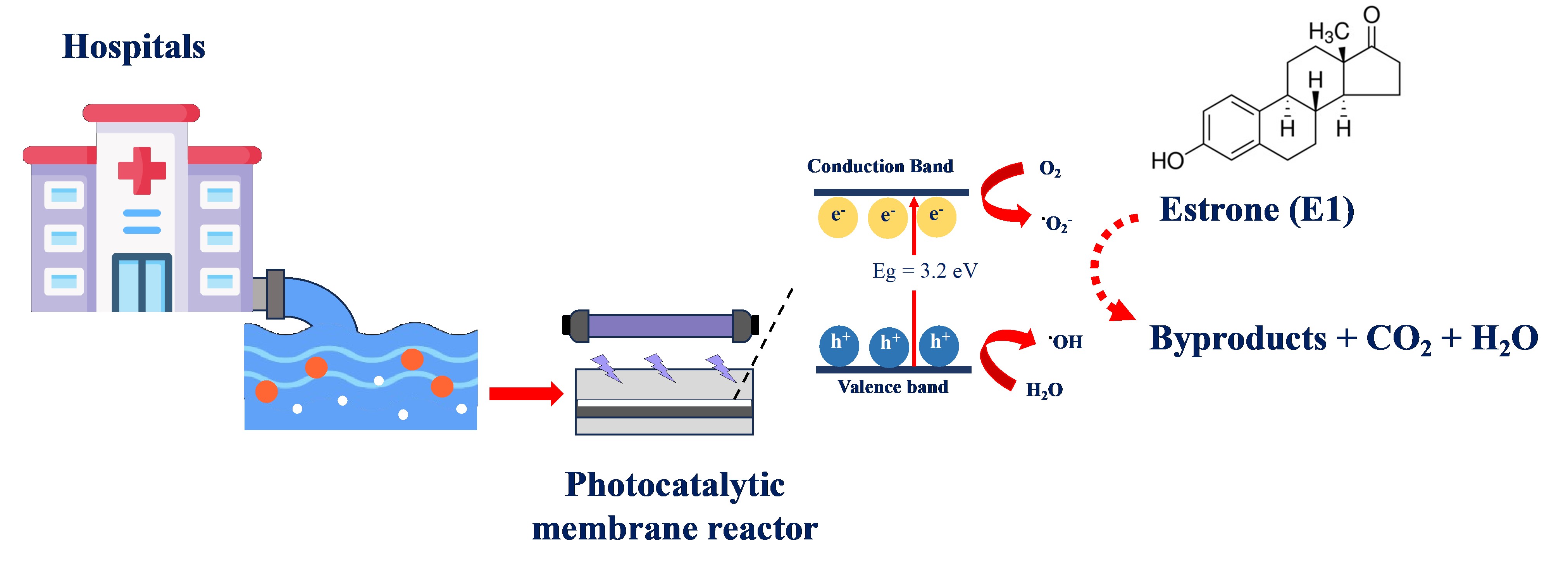Monitoring of Estrone from Hospital Wastewater and its Removal by Photocatalytic Membrane Reactor
Main Article Content
Abstract
Steroid hormones, classified as endocrine-disrupting compounds (EDCs), pose significant environmental and health concerns due to their persistence and potential adverse effects. This study investigates the presence of estrone (E1) in hospital wastewater and the efficiency of E1 removal through a photocatalytic membrane reactor (PMR). Wastewater samples were collected from two hospitals with different wastewater treatment processes. The concentration of E1 was analyzed using a combination of solid phase extraction (SPE) and liquid chromatography-tandem mass spectrometry (LC-MS/MS). The PMR experimental setup involved a polyvinylidene fluoride (PVDF) membrane incorporated with 1 wt% titanium dioxide (PVDF/TiO2). The PMR performance was evaluated with and without UVC radiation. The membranes were characterized for their water contact angle (WCA) and surface morphology. The maximum concentration of E1 in the hospital wastewater was 2.46 ± 1.90 ng L-1. The PMR, operated for 180 min, demonstrated that PVDF/TiO2 (UV) exhibited the highest E1 removal efficiency (96.7 ± 1.4%). This superior performance was attributed to the synergistic effect of PVDF/TiO2 membrane filtration combined with UV irradiation, enhancing the removal capacity. The removal of E1 in the PVDF/TiO2 membrane (36.5 ± 2.7%) surpassed that of the PVDF membrane (32.6 ± 7.8%). The kinetics analysis indicated that the degradation of E1 followed pseudo first-order kinetics. These findings underscore the potential of PMR technology, specifically employing PVDF/TiO2 membranes with UV irradiation, for efficient removal of E1 from hospital wastewater, offering insights for future applications in mitigating micropollutant release into the environment.
Article Details

This work is licensed under a Creative Commons Attribution-NonCommercial 4.0 International License.
Published articles are under the copyright of the Applied Environmental Research effective when the article is accepted for publication thus granting Applied Environmental Research all rights for the work so that both parties may be protected from the consequences of unauthorized use. Partially or totally publication of an article elsewhere is possible only after the consent from the editors.

